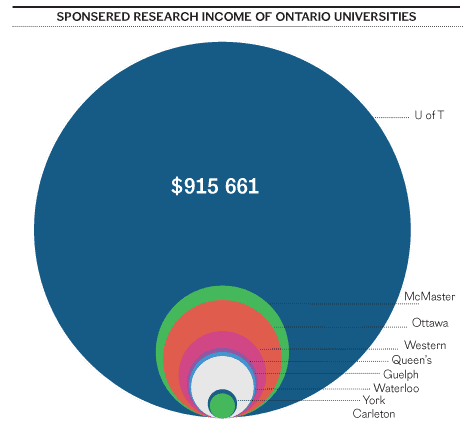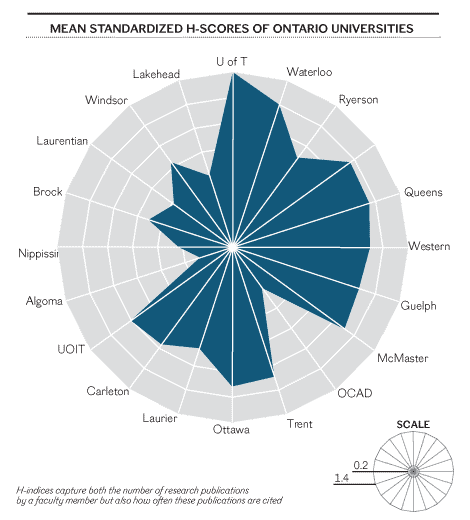Funding for Ontario’s post-secondary institutions may undergo some major changes towards a more differentiated system by the spring of 2014. The system, proposed by the Higher Education Quality Council of Ontario (HEQCO) with the province’s Ministry of Training, Colleges and Universities, expects institutions to focus on those elements where they have particular strength.
Currently, the distribution of funds is largely based on full-time enrolment, with larger universities receiving more through provincial grants. Differentiation requires universities and colleges to focus on a certain aspect to specialize in — whether it is specific subject areas, types of students, or research intensity — and the funding will be allocated accordingly. As a result, the prioritization of these areas will thrive, while costs will be reduced, as less necessary functions are limited.

In a report released in July, aimed to inform the discussion on differentiation, the HEQCO suggests Ontario’s universities be split into four categories, primarily based on research intensity. Based on the data presented, it suggests that U of T is in a category by itself. The report compares Ontario universities based on variables such as enrolment, percentages of graduates with PhDs, and sponsored research income.
U of T leads in all these areas, by a very large margin. For example, U of T’s sponsored research income of $915,661 is three times more than that of McMaster, which has the second-highest research income.
While U of T is in its own category, other universities are split between those that are research-intensive — including McMaster, Western, Ottawa, Waterloo, Queen’s, and Guelph — and those that are undergraduate-focused, including the University of Ontario Institute of Technology (UOIT) and the Ontario College of Art and Design (OCAD), and another group of universities — consisting of York, Carleton, Windsor, and Ryerson — that fall in-between.
British Columbia works on a similar system, with universities split into four categories: research-intensive universities, teaching-intensive universities, colleges, and institutes. Alberta also functions on a differentiated system, called the “Six Sector Model.” Institutions are categorized into six sectors: Comprehensive Academic and Research, Baccalaureate and Applied Studies, Polytechnical, Comprehensive Community, Independent Academic, and Specialized Arts and Culture.
The province offers different types of funding granted to institutions based on their mandate. In the UK, a similar system exists to the one proposed for Ontario. The Higher Education Funding Council for England (HEFCE) distributes its funds based on the results of a Research Assessment Exercise (RAE), which analyzes the quality of research and productivity of universities, and providing those with superior research with more funding, while also encouraging less research-intensive institutions to refocus in other areas and “rewarding” them appropriately.

However, neither jurisdiction categorizes a university in a cluster of its own. U of T, which already receives the largest amount of government funding in Ontario, is also ranked significantly higher in world rankings than other institutions in the province. Compared to the world however, U of T does not offer smaller classes and revenue per student is significantly lower than its competitors. While a differentiated system would allow U of T to continue to develop and maintain its position as an internationally competitive, research-intensive university, other institutions may be at a disadvantage. There is concern that a differentiated system will reduce the level of autonomy of institutions and inhibit smaller institutions from aspiring towards a higher level.
By forcing institutions to decide what areas they will focus on, other programs that have smaller enrolment numbers may be neglected, or eventually cut. This limits the number of programs available in regions that have fewer universities, giving students less choice. The implementation of Strategic Mandate Agreements hoped to curtail this issue, however, as the government encouraged institutions to determine their own mandates and their contribution towards post-secondary education in Ontario. In response to concerns about program cuts — raised by universities, such as the University of Windsor — the minister of training, colleges and universities, Brad Duguid, asserted that: “Differentiation is not an exercise in program cuts. The differentiation framework does not put our colleges and universities into rigid categories, nor does it advantage or disadvantage any particular program area of study.”
The government argues that differentiation aims to contribute towards the sustainability of post-secondary institutions. It cited in its differentiation policy framework that the need to adjust the system is due to the government’s demanding fiscal situation. It also pointed out the cost of institutions exceeding growth in revenues from operating grants and tuition as a financial concern.
Ontario students currently have the highest tuition fees in the country, an issue that the Canadian Federation of Students (CFS) has been lobbying against for years. In a statement, Alastair Woods, chairperson of the CFS in Ontario, said: “Though the government touts these proposals as innovative and forward thinking, they are simply asking institutions to provide more with less.”

